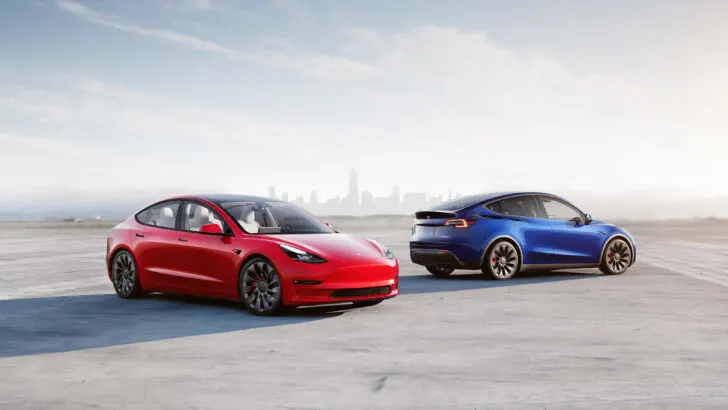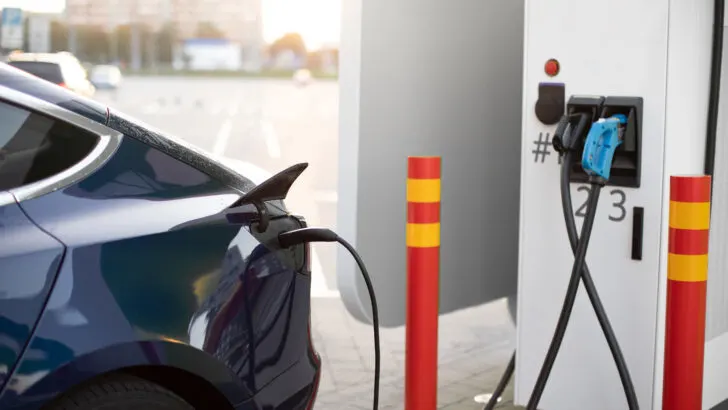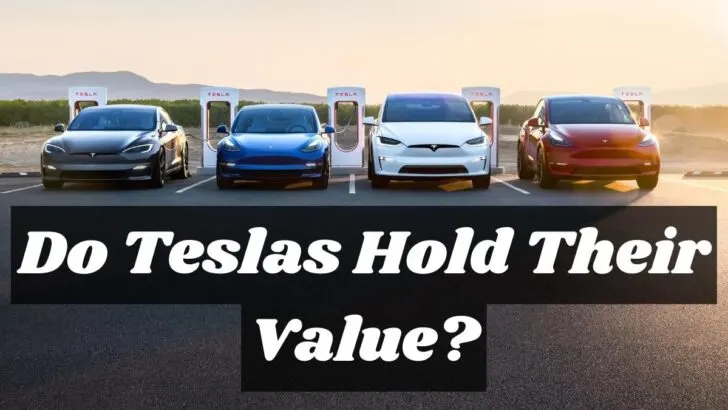When it comes to electric vehicles (EVs), the first name most people think of is Tesla. After all, this was one of the first EV brands to make a name for itself in the U.S. Even today, they are still the most popular EV on the market.
While this is true, unlike some of the other EV options available, Tesla comes with a premium price tag. If you are going to pay more for an EV, there’s a good chance you want to feel confident it will hold its value.
While the initial depreciation rate of Teslas is high, over time, they depreciate at a slower rate than traditional gas-powered vehicles. Teslas hold their value, with some used models gaining value on trade-in.
What does this mean? Put simply, Teslas are a good investment compared to other vehicles.
How Much Do Teslas Depreciate?
You have likely heard that as soon as you drive off the lot of the dealership with a new car, it loses value. This is true and defines what depreciation is. The actual definition of depreciation is a reduction of value in an asset after it is purchased.
The concept is usually associated with new vehicles, and while used cars depreciate, they do so at a much lower rate.
For example, with Teslas, rapid depreciation occurs in the initial three years of ownership and then slows down significantly.
Is It Possible to Reduce Depreciation?
When purchasing an electric car, depreciation will happen. While there isn’t anything you can do to stop it completely, you can take steps to mitigate its financial impact.
As the owner of a Tesla, you can maintain its resale value by following the suggested maintenance schedule and taking care of the battery.
The depreciation rate of Teslas is based on the mileage of around 12,000 per year. If you are driving your Tesla more than this, its value will diminish faster.
Also, the Tesla battery will usually degrade by about 10% for every 100,000 miles. However, if you use fast charges too often, it could speed up this process.
If you want to purchase a used Tesla, you should ensure the vehicle’s condition aligns with the resale price and warranties that will be transferred to you.
It’s also worth noting that some perks, like free access to the Supercharger network, aren’t passed on to new owners. However, FSD features are transferrable.
You also receive free over-the-air software updates, which means you get to enjoy new features and capabilities added after the date of manufacture for the Tesla you are buying.
Also, buying used means that the vehicle isn’t likely to have all the features that a new model year version would. It’s smart to purchase a used Tesla within three to five years after production.
This means enough time has passed for the price to go down, but not so much time has passed that the features are obsolete.
How Long Do Teslas Hold Their Value?
Now that you have a better understanding of how depreciation works for new and used vehicles, it’s a good idea to look into how Teslas hold their value.
In most cases, Tesla depreciation occurs slower than other vehicles, including plug-in hybrids and battery electric vehicles.

According to AARP, the Model 3 will depreciate by 5.5% after one year of ownership. This means it drops from $48,000 to $46,000 (depending on what model year is owned).
To compare, the BMW 7 Series drops from $109,000 to $62,000 in the same amount of time.
Even if you compare the depreciation rate of other hybrids and electric vehicles, the depreciation rate of Tesla comes out ahead.
For example, the depreciation rate of a BMW i3 over three years is 60.4%, the Hyundai IONIQ Electric by 47.7%, and the Kia Soul EV by 58.7%. The Tesla Model 3, on the other hand, depreciates by just 10.2% in three years.
This is good news if you own or plan to purchase a Tesla. You can expect it to sell for just slightly less than what you purchased it for after a few years.
For those who want to buy a used Tesla, this may not be great news since it will be harder to find a great deal on these vehicles due to this lower depreciation rate.
Reasons for Teslas Slower Depreciation Rates
One of the main reasons Teslas maintain most of their value even several years after being purchased is the mileage range they offer.
Thanks to innovative technology and quality construction, most Teslas can last for more than 500,000 miles. The average person drives just 13,500 miles a year.
As a result, the depreciation of Teslas isn’t usually based on mileage (like other vehicles). Instead, it is based on the remaining battery capacity of the vehicle.
Also, some gas-powered vehicles can depreciate by up to 60% in the initial five years of ownership (as mentioned above), while others only maintain a “scrap” value.
Gas-powered cars have over 2,000 parts, compared to EVs 20. This makes it clear that the cost of repair and maintenance will be much higher for gas-powered vehicles, making depreciation for these higher, too.
When trying to figure out how quickly your vehicle will depreciate, you should consider other factors too. These include things like:
- Warranty terms
- Model
- Add-ons purchased
- Anticipated maintenance
- Vehicle’s condition
- EVs range
- Odometer mileage (remaining battery life for an EV)
All these factors will impact the resale value.
Continued Improvement Efforts for Tesla Vehicles
With the government passing new climate legislation regularly, such as the Inflation Reduction Act, and gas prices fluctuating significantly, it is clear that EVs are the future.
Many EV manufacturers, including Tesla, are working to continue making improvements as technology advances. These new efforts are working to increase their long-term value.
One example is how the cost of batteries for EVs continues to drop each year. For example, in 2010, the cost was $1,200 per kilowatt-hour (kWh); in 2021, it had dropped to $132 per kWh.

These lower prices are making replacing the batteries in your EV more affordable, extending its life, and boosting the resale value.
It’s also expected that Tesla will soon implement FSD – Full Self Driving – capabilities into existing EVs. This is going to increase the resale value even more.
Any Tesla that has been purchased after 2019 is eligible for the software updates to enable the FSD technology. It’s necessary to add FSD capabilities when buying Teslas or through the website or app. In September 2022, Tesla announced that FSD capabilities would increase in price from $12,000 to $15,000.
Another option is enhanced autopilot capabilities. This additional feature adds $6,000 to the price tag. The features offered by enhanced autopilot include smart summon, summon, auto park, auto lane changing, and autopilot navigation.
There’s a Growing Demand for Teslas
If you have ever attempted to buy a Tesla, you know they are in high demand. Usually, you will have to wait around a year before you get to drive your EV.
Even when the supply chain is low, the demand for this EV stays high. This often results in used Teslas being close to the price of new ones, which allows owners to begin driving their new vehicle sooner. In some situations, used Teslas are priced even higher than new ones.
Should You Invest in a New or Used Tesla?
New or used, you can’t really go wrong when it comes to purchasing a Tesla.
These EVs are known for retaining their value, and some used ones even sell for more than new models just because they are in such high demand. This makes it clear that now may be the time to jump on the EV bandwagon.
Final Remarks on If Teslas Hold Their Value
Tesla models, especially newer ones, tend to hold their value quite well, as long as you make sure to maintain your vehicle and not overdrive it.
Some things that can affect the value of a Tesla include its mileage, how old the tech in the car is, and if you bought the car new or used.
